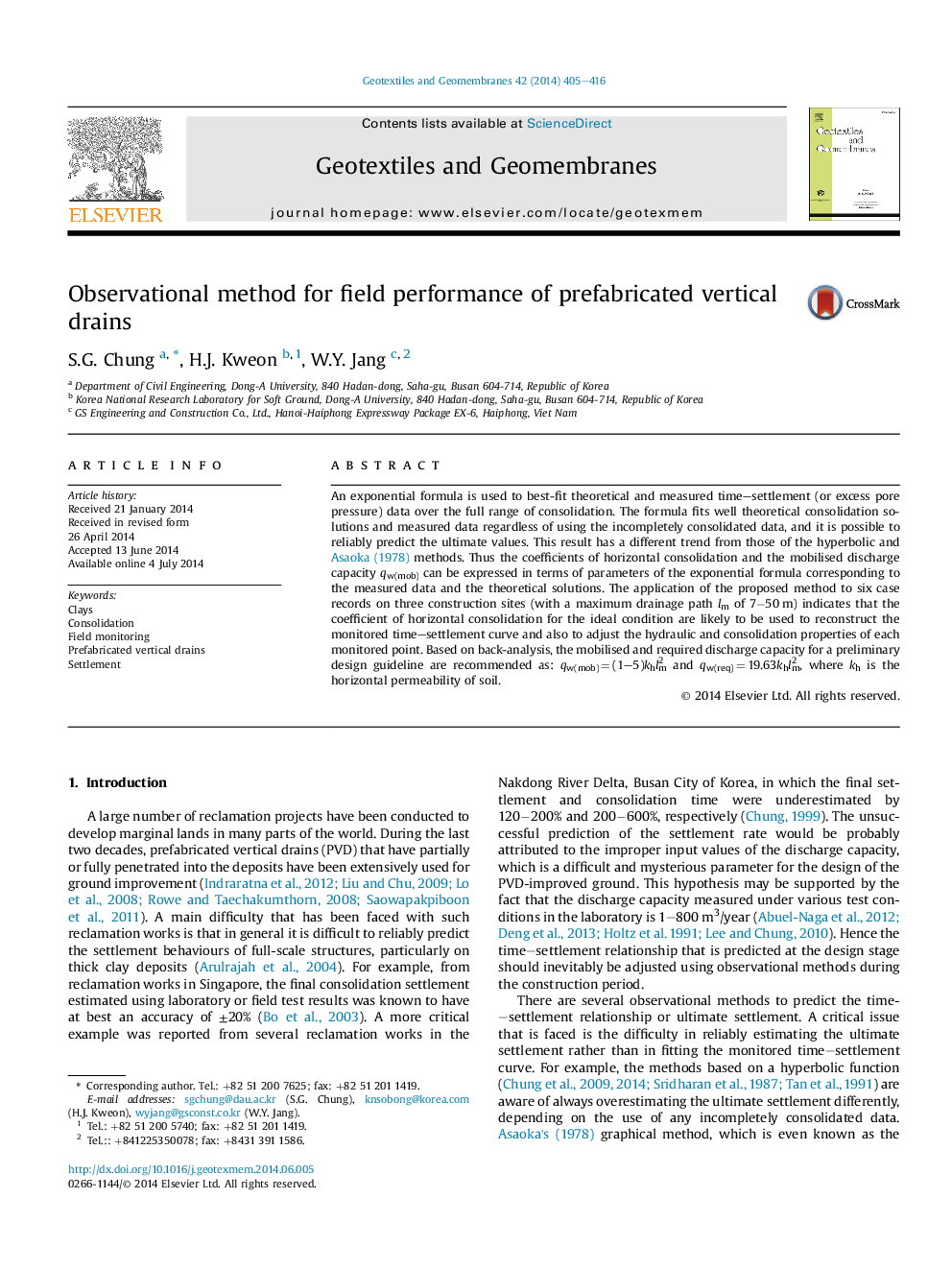| کد مقاله | کد نشریه | سال انتشار | مقاله انگلیسی | نسخه تمام متن |
|---|---|---|---|---|
| 274101 | 505191 | 2014 | 12 صفحه PDF | دانلود رایگان |
An exponential formula is used to best-fit theoretical and measured time–settlement (or excess pore pressure) data over the full range of consolidation. The formula fits well theoretical consolidation solutions and measured data regardless of using the incompletely consolidated data, and it is possible to reliably predict the ultimate values. This result has a different trend from those of the hyperbolic and Asaoka (1978) methods. Thus the coefficients of horizontal consolidation and the mobilised discharge capacity qw(mob) can be expressed in terms of parameters of the exponential formula corresponding to the measured data and the theoretical solutions. The application of the proposed method to six case records on three construction sites (with a maximum drainage path lm of 7−50 m) indicates that the coefficient of horizontal consolidation for the ideal condition are likely to be used to reconstruct the monitored time–settlement curve and also to adjust the hydraulic and consolidation properties of each monitored point. Based on back-analysis, the mobilised and required discharge capacity for a preliminary design guideline are recommended as: qw(mob) = (1–5)khlm2 and qw(req) = 19.63khlm2, where kh is the horizontal permeability of soil.
Journal: Geotextiles and Geomembranes - Volume 42, Issue 4, August 2014, Pages 405–416
